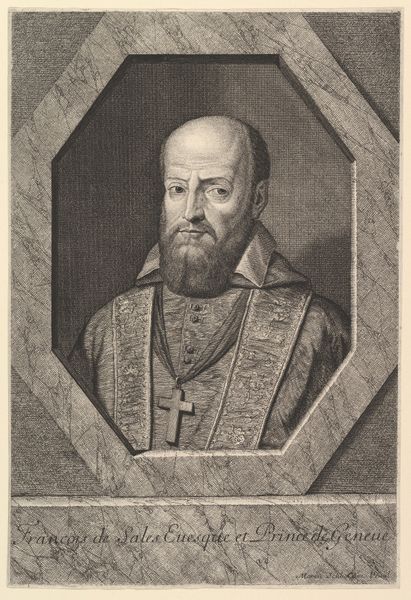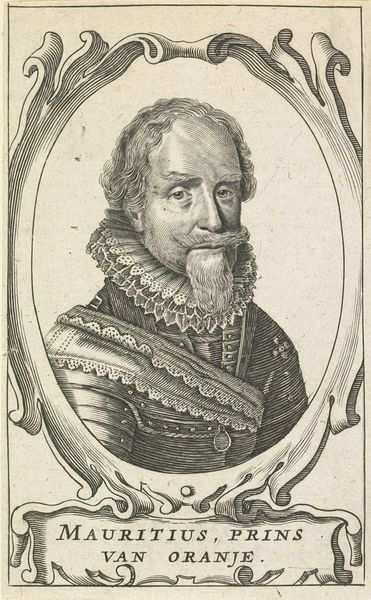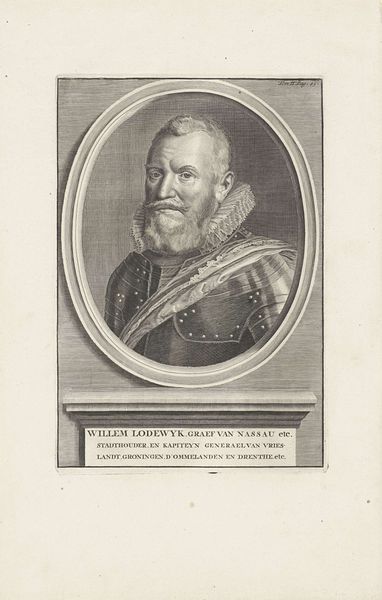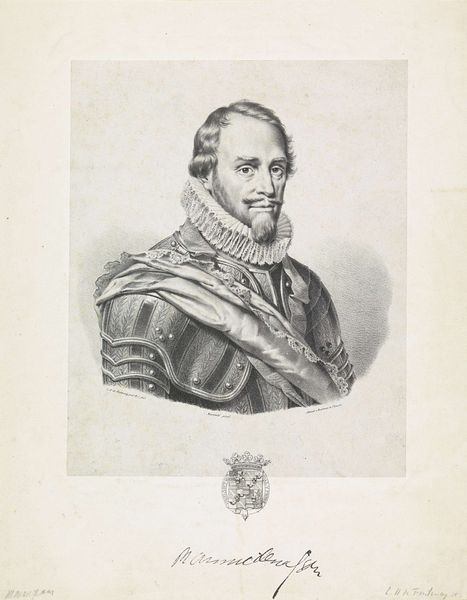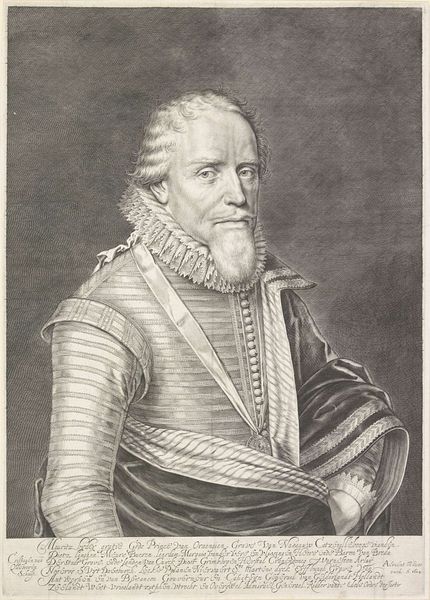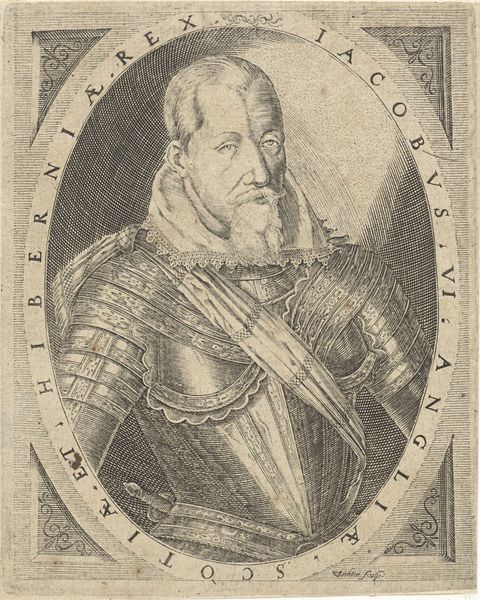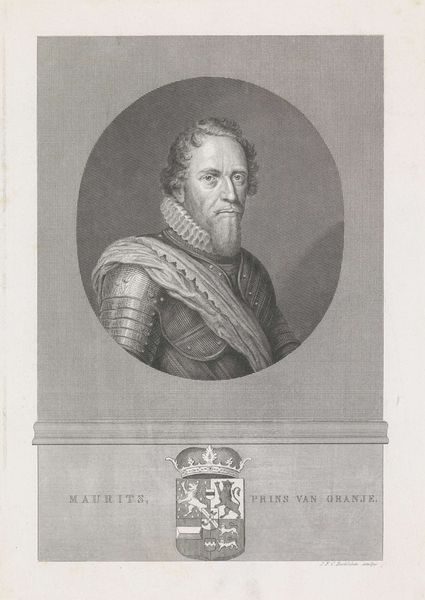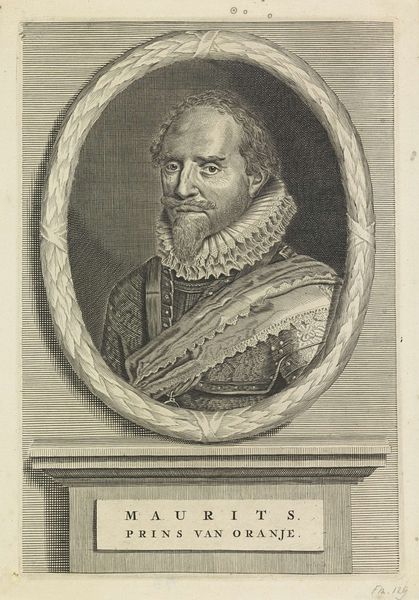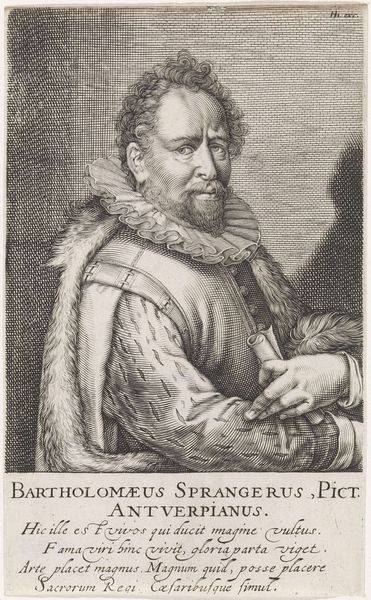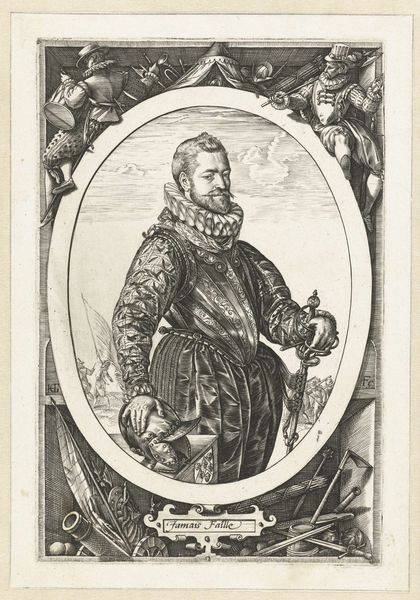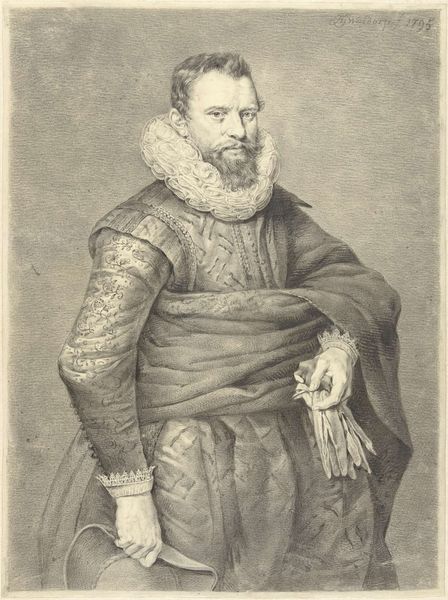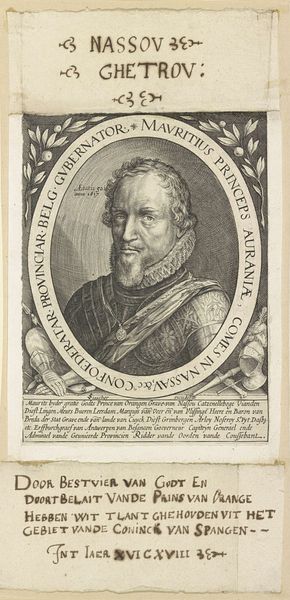
print, engraving
#
portrait
#
baroque
# print
#
history-painting
#
engraving
Dimensions: height 240 mm, width 188 mm
Copyright: Rijks Museum: Open Domain
Curator: Before us hangs "Portret van een Venetiaanse man met commandostaf," an engraving by Lucas Vorsterman II, created sometime between 1650 and 1700. It resides here in the Rijksmuseum collection. Editor: It projects an almost unsettling sense of stoicism. The man’s gaze is unwavering, framed by dark, somewhat severe lines. Curator: Indeed. Vorsterman's technical skill is quite apparent, isn't it? Note the contrasting textures—the smooth skin against the meticulously detailed armor, all rendered through precise hatching and cross-hatching. Observe how the artist establishes a hierarchy of light and shadow, structuring the composition. Editor: I'm struck by the symbolic weight carried by his armor. It's a visualization of power during a period of almost constant conflict between European states. And a reflection on how masculinity becomes bound to militarism and strength in societies defined by a war culture. What do we know of this particular Venetian man? Curator: That remains somewhat elusive. The inscription “IOANNI MAVRI VENET.” suggests he was likely a person of some status in Venetian society. However, the emphasis shifts to representation of authority and command, evident not just in the armour, but more obviously in his grasp of the command staff itself, and in how that posture engages notions of aristocratic governance at that period. Editor: I find the portrait incredibly telling regarding the construction of male identity and the reinforcement of existing social strata during the Baroque era, almost as a study of self-fashioning that becomes deeply intertwined with political aspirations and displays of privilege. He seems very self-aware, posed and very ready for this visual commemoration of himself. Curator: Perhaps. But there’s also something timeless about its structural rigor—the geometric balance of the figure, the classic portrait conventions, which elevate the personal image to an ideal one. Editor: Still, his identity will perhaps be forever concealed by the prevailing attitudes and power relationships of the era. But seeing those now adds another vital layer to viewing artwork such as this. Curator: True. The beauty of engaging with art like this Vorsterman print lies in its endless capacity to reflect both formal and social nuances across centuries.
Comments
No comments
Be the first to comment and join the conversation on the ultimate creative platform.
